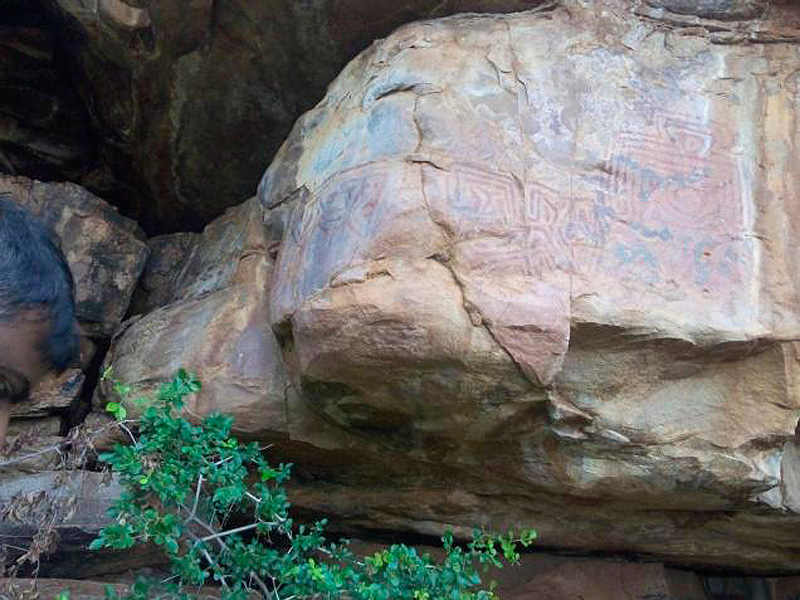
© n/aThe Peddakona and Gandikota rock paintings discovered in Kadapa district.
Amateur archaeologists Y. Ramakrishna Reddy and Lakshmi Kanta Reddy, have stumbled upon Mesolithic period rock paintings at Gandikota Fort in Kadapa district.
The duo is serving in government departments have shown interest in archaeology. Mr. Ramakrishna Reddy, working as conductor in the Proddutur bus depot of AP State Road Transport Corporation (APSRTC) and Mr. Lakshmi Kanta Reddy, a police constable in APSP battalion, Siddhavatam, were on a visit to the fort when they discovered the paintings.
They found the paintings on the rocky surface at Peddakona, also known as Dongalakona, located next to Farah Bagh area on the way from the Anantapadmanabha temple of the fort to the gorge of the river Penna.
The paintings representing geometrical designs are seen on a big boulder executed in red ochre. The lines painted in the shape of rectangles, triangles and circles denote abstract forms of some animals.
Based on the information given by Mr. Ramakrishna Reddy, archaeologist and CEO of The Cultural Centre of Vijayawada (CCV) E. Sivanagi Reddy inspected the site and confirmed that the rock paintings belong to the Mesolithic period datable to 10,000-8000 B.C.
Dr. Reddy said that the paintings executed on a big rock (5.0 mts x 2.00 mts) and vary in size from 1.5 mts to 2.00 mts in length and 0.50 mts to 6.5 mts in height in outline and rendering is done with a single thick brush stroke.
Similar paintings of the mesolithic period were earlier noticed in the same district at Chintagunta and Dappalle and Kethavasam in Kurnool district and Bollaram in Mahbubnagar district, according to N. Chandramauli, a specialist in rock art studies of Andhra Pradesh and Telangana.
Dr. Reddy said that the CCV will take up the work of documentation of these rock paintings under a Digital Heritage project soon. He requested officials of the Archaeological Survey of India, the custodians of Gandikota, a medieval fort, to erect signages and legend boards on the importance of these rock paintings for the benefit of tourists and research scholars in history.

Reader Comments
to our Newsletter